Abstract 1. Femtosecondphoto-switchingofinterfacepolaritonsinblackphosphorus in interface of black scale heterogeneous structure (Femtosecondphoto-switchingofinterfacepolaritonsinblackphosphorus...
1. Femtosecond optical switch of interface electromagnetic phonon in black scale heterogeneous structure
(Femtosecond photo-switching of interface polaritons in black phosphorus heterostructures)
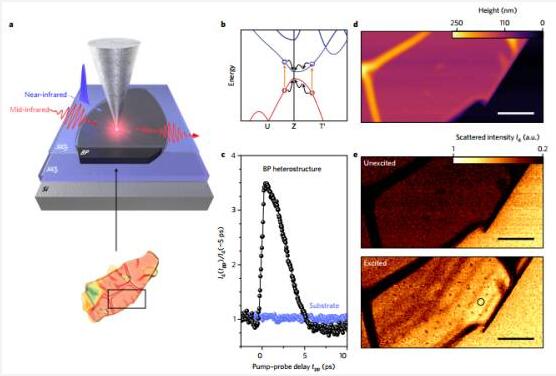
Huber et al. designed a SiO2/black scale/SiO2 heterostructure. The surface phonon mode and surface plasma mode in the SiO2 layer are excited by photoinduced band in the black scale. In the Reststrahlen zone of SiO2, the hybrid interface electromagnetic phonons have surface-like phonon properties with defined frequency, momentum and excellent coherence. In the lifetime of photogenerated electron-hole plasma, coherent hybrid electromagnetic phonon waves can be excited by a broadband mid-infrared pulse in a scattering-type scanning near-field optical microscope. Scattered radiation enables them to track new hybrid patterns, energy and space in a timely manner. They found that due to the recombination of electron-hole pairs in black phosphorus, the surface mode can be excited at 50fs and disappear within 5ps. This excellent switching ratio and switching speed, coherence, and constant wavelength of the transient mode make it promising for ultrafast nano-optics. (Nature Nanotechnology DOI: 10.1038/NNANO.2016.261)
2. Biaxial strain core/shell PtPb/Pt enhances oxygen reduction (ORR) activity
(Biaxially strained PtPb/Pt core/shell nanoplate boosts oxygen reduction catalysis)
In core/shell M/Pt (M=Ni, Co or Fe) catalysts, surface compressive strain is necessary to increase oxygen reduction (ORR) activity. Bu et al. reported a class of biaxially strained PtPb/Pt core/shell nanosheet catalysts. The nanosheet-stabilized Pt(110) surface has a high ORR specific activity and mass activity, reaching 7.8 mA/cm2 and 4.3 A/mg Pt at 0.9 V vs. RHE voltage. Density functional theory calculations show that the boundary between Pt and the top (bottom) of the Pt(110) plane undergoes large tensile strains, which helps to optimize the Pt-O bond strength. The intermetallic PtPb core and the uniform four-layer Pt shell help to enhance the high stability of such catalysts, with almost no activity decay after 50,000 cycles, and no significant structural and compositional changes. (Science DOI: 10.1126/science.aah6233)
3. Serrated Pt nanowires improve the mass activity of oxygen reduction reaction
(Ultrafine jagged platinum nanowires enable ultrahigh mass activity for the oxygen reduction reaction)
Increasing the mass activity of Pt for oxygen reduction (ORR) should optimize specific surface area and electrochemically active area (ECSA). Li et al. reported that a solution-synthesized Pt/NiO core-shell nanowire can be converted into a PtNi alloy nanowire by heat treatment and then converted into a serrated Pt nanowire by electrochemical de-alloying. This serrated nanowire exhibits an ECSA of 110 m2/gPt and a specific area activity of 11.5 mA/cm2, almost twice the highest reported previously. Reactive molecular dynamics simulations show that high stress and uncoordinated rhombohedral surface configurations in sawtooth nanowires significantly increase ORR activity. (Science DOI: 10.1126/science.aaf9050)
4. Photochemical reaction and molecular excited state transient map
(Temporal mapping of photochemical reactions and molecular excited states with carbon specificity)
Photochemical reactions are fundamental to many important industrial and biological processes. The use of spatially resolved monitoring of photochemical reaction kinetics and thermodynamics of molecular excitation within active molecules will provide a powerful explanation for the reaction pathways and mechanisms. Wang et al. reported that the laser-excited muon probe spin spectrum can monitor the transient and spatial processes of these reactions at a single carbon scale in the molecule. The observed time-dependent photoinduced change indicates that the photochemical activity of a particular carbon atom is a result of the modification of the excited state wave function. This fully demonstrates the sensitivity of this technology and its potential for detection of excited states and photochemistry (Nature Materials DOI:10.1038/NMAT4816)
5. The revival of hydride as an energy material
(The renaissance of hydrides as energy materials)
Hydride-based materials have been the key to the development of several practical energy storage technologies, the most important of which is the Ni-metal hydride battery. In order to meet future energy needs, the past ten years have witnessed the important progress of hydride as a hydrogen storage medium. The latest research has placed hydrides in the most promising materials for electrochemical energy storage. In addition, recent research has revealed the potential of hydrides for efficient power conversion. Therefore, Montadi and Orimo reviewed the most critical developments in hydrides and pointed out that the widespread use of hydride technology should be environmentally responsible. (Nature Reviews Materials DOI: 10.1038/natrevmats.2016.91)
6. Coaxial heterogeneous structure Pd/TiO2@CNTs electrocatalytic hydrogen production
(Co-axial heterostructures integrating palladium/titanium dioxide with carbon nanotubes for efficient electrocatalytic hydrogen evolution)
Given the depletion of fossil fuels and their negative impact on the environment, new energy blueprints must take into account the ecological environment. Effective hydrolysis of hydrogen is a promising approach to renewable energy economy and sustainable development. Valenti et al. demonstrated a three-dimensional electrocatalytic interface, a Pd/TiO2 layer attached to a carbon nanotube (CNTs) grade coaxial. This structure integrates the conductive carbon core and the active inorganic phase. This nanostructure exhibits excellent electrocatalytic performance over current electrocatalysts (conversion frequency of 15000 H2/h at 50 mV overpotential). The Tafel slope is 130 mV/dec, indicating that the rate limiting step of the reaction is the decomposition of water and the formation of hydrides. (Nature Communications DOI: 10.1038/ncomms13549)
7. Stable gradient nanostructure reduces the friction coefficient of copper alloy
(Lowering coefficient of friction in Cu alloys with stable gradient nanostructures)

The coefficient of friction (COF) of a metal is generally relatively high, mainly because the frictional contact causes plastic deformation under the wear surface, resulting in surface roughening and formation of a peeling friction surface. Reducing the COF of metals in engineering applications is important to improve the reliability and effectiveness of metal contacts, and there are also significant challenges. Refining the metal grains to the nanometer scale does not reduce the dry-slip COFs, although the hardness of the metal can be increased many times. Recently, the Academician Lu Ke, a researcher at the Shenyang Institute of Metals, Chinese Academy of Sciences reported a submicron thick and stable gradient nanocrystal surface layer, which can greatly reduce the COF of copper alloy from 0.64 to 0.29 during high load dry slip. Ceramic COFs. This stable low COF originates from effective compression of surface roughening and peeling friction surface formation due to sliding, since the stable gradient nanostructures are capable of accommodating large plastic strains caused by more than 30,000 repeated slips. (Science Advances DOI: 10.1126/sciadv.1601942)
8. High environmental stability conjugated polymer field effect transistors (FETs)
(High operational and environmental stability of high-mobility conjugated polymer field-effect transistors through the use of molecular
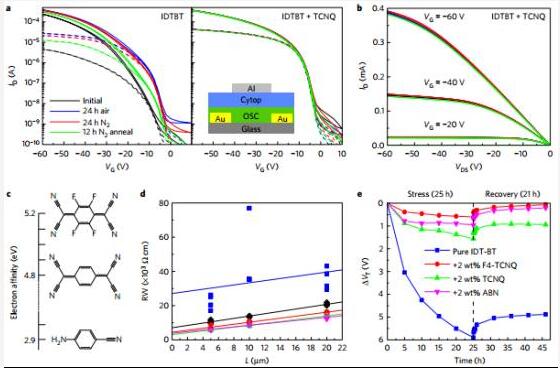
Due to low temperature handling properties and mechanical flexibility. Conjugated polymer field effect transistors (FETs) are promising materials for flexible electronic circuits and display applications. Much progress has been made in the performance of materials. However, there are still problems in operability and environmental stability, especially in applications where high threshold voltage stability is required, for example, active matrix processing by organic light emitting diodes. Nikolka et al. studied the physical mechanisms of operability and environmental stability concealment in high mobility, p-type polymer FETs and demonstrated an effective way to improve device stability. They found that water molecules embedded in the nanopores in the polymer microstructure are a key factor in charge waves or device degradation. Adding molecular additives to these nanopores to replace water molecules can effectively increase the stability and uniformity of the device, which is sufficient for industrial applications. (Nature Materials DOI: 10.1038/NMAT4785)
This article is authorized by the new material online (micro signal: xincailiaozaixian), if other media need to reprint, please contact the new material online small series (micro signal)
Only zhongda Steel offers you metal garages that are constructed with a galvanized frame system that goes together easy. Our steel garage kits are designed to be assembled with no special or high priced rental equipment such as forklifts and cranes.
Our steel garage kits are available in most any size, and are configurable to include one or several bay doors, pedestrian doors, windows, and other options.
Additionally, our [Stand Alone" frame system that ships with our garages give you the flexibility to use a broad spectrum of exterior materials such as wood, stucco, veneers etc. Our kits come in a variety of colors and can be designed to be HOA friendly




Steel Frame Building
Prefabricated Steel Frame Building,Steel Frame Prefabricated House,Prefabricated Steel Frame Building Fabrication,Steel Structure Prefabricated Buildings
Zhongda Steel Structure , https://www.zhongdametal.com

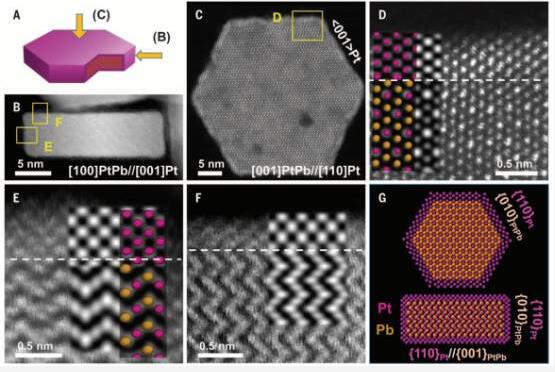
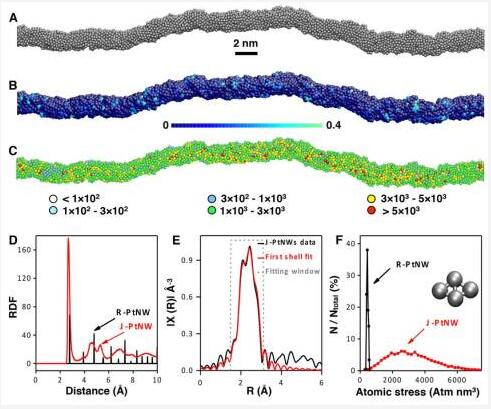

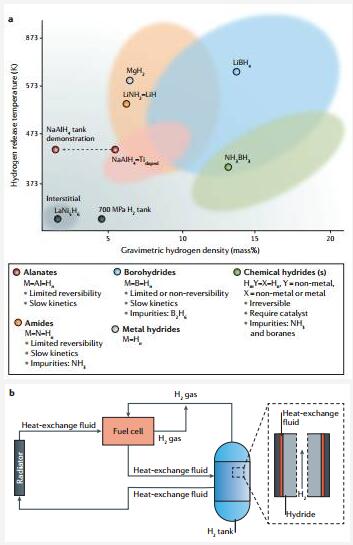







![<?echo $_SERVER['SERVER_NAME'];?>](/template/twentyseventeen/skin/images/header.jpg)